Three reasons why your iPhone may break
People by nature are frivolous creatures. And sometimes they underestimate certain things. If we consider the frivolity of people in the context of our topic, we can distinguish three types of damage that it can lead to and force you to part with varying amounts of money to repair or buy a new iPhone. So, my experience gained through working at the Computers Art iPhone repair service center allows us to distinguish three categories of damage:
- mechanical damage;
- electrical damage;
- malfunctions caused by moisture.
Before going into detail on each category, I would like to note the following. The vast majority of people have a broken cause-and-effect relationship in the context of being damaged by a variety of devices. This is most likely a consequence of ignorance about their internal construction. In this article I will tell you what can happen if your phone falls, for example, on asphalt or on a tiled kitchen floor.
In my work, I sometimes encounter clients who are surprised and not bewildered when we find some damage other than what was stated upon acceptance. For example, a client comes and brings an iPad 2 with a broken touchscreen. At the same time, he casually mentions that after the fall his Wi-Fi began to work worse. And it is clear when checking, before accepting the device for repair, that near the router, of the three bars of the signal indicator, for example, only two are available. And then it turns out that when the glass broke, it tore into pieces the Wi-Fi antenna, which is located under the glass on the right side of the Home button.
Or, for example, a client brings in an iPhone and complains that the sound control scale has disappeared. And when you start asking questions in order to find out some details that would help quickly determine the malfunction, it turns out that the device has been in water. And when you tell the client the diagnostic result, that the cause of this malfunction was moisture, and you hear in response: “What are you, what are you! After all, only a couple of drops got on him.” As you know, it is better to prevent problems than to eliminate their consequences.
Mechanical damage
This type of damage is the most common of the three. In most cases, mechanical damage occurs as a result of falls. Probably, many of you have heard your friends proudly talk about how their iPhones have never fallen and, despite this, continue to work normally.
Indeed, you may turn out to be a lucky person and the fall of your phone will pass without a trace for him. But most often it's much worse. For example, such a fall may cause the display glass to break. And if in the iPhone 3G/3GS this glass can be changed separately, then in all other iPhone models it is glued together with the display and can also be changed along with it. As you understand, this affects the price.
Above I described the most optimistic outcome for mechanical damage: when the malfunction is obvious. But there is also an option in which something inside the device breaks. Something you can't see because the part is hidden from you by the iPhone's body. For example, as a result of screen damage, the front camera may be broken by shards of broken glass. Or the iPad may have a damaged Wi-Fi antenna, which I mentioned earlier.
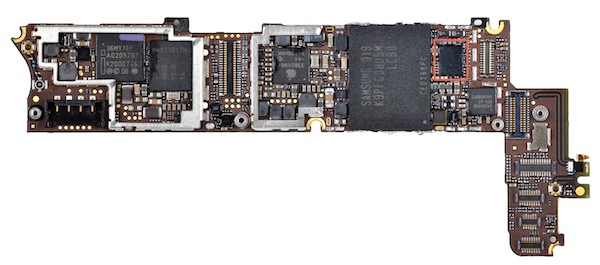
The iPhone 4 uses a Cirrus Logic 338S0589 chip for audio processing.Illustration taken from ifixit.com.
In addition, PCB components often fail as a result of falls and impacts. For example, your phone fell, everything looks intact, but there is no sound. Or something is not working: there is sound only in the headset, and if you make a call in the usual way, you cannot hear the interlocutor. All of these symptoms indicate that your audio codec or audio mixer is damaged (this all depends on your iPhone model). Or your Wi-Fi has disappeared because the chip responsible for its operation has been damaged. Repairing such breakdowns is within the capabilities of most service centers, but the price will sadden you.
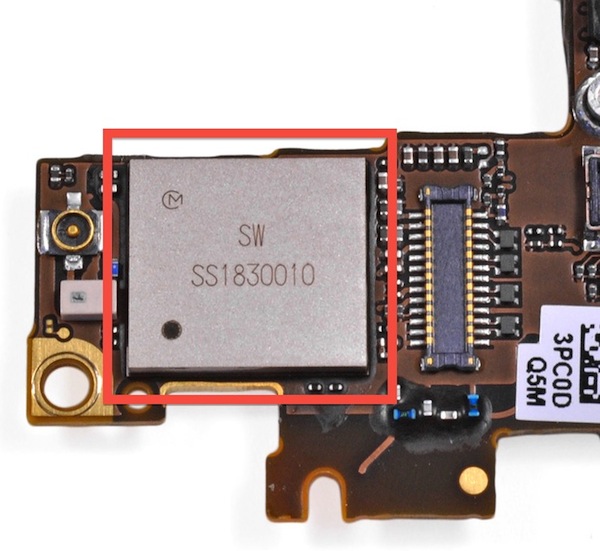
Murata SW SS1830010 chip, responsible for Wi-Fi and Bluetooth in the iPhone 4S. It has a ceramic substrate (instead of silicon, as usual), which is why it has an excellent signal-to-noise ratio. Illustration taken from ifixit.com.
The third subtype of mechanical damage is the most deplorable, in terms of consequences - cracks in the main board. The fact is that the iPhone motherboard has seven layers. Each has conductive tracks that connect all the parts mounted on its surface. Your iPhone may fall unsuccessfully, and as a result of the fall, internal connections will be damaged and cannot be repaired. Such a phone can simply be sold for spare parts, since it is impossible to get to the inner layers of the board without destroying it.
Electrical damage
iPhone and iPad are very picky about the quality of the electrical current they consume. The power supply that comes with them is a very complex device. Here you can see what is inside such a power supply. The charging circuit that Apple uses in its devices is quite complex. At the input of the iPhone or iPad charging path there are two comparators that compare the voltages at D+ and D- with given reference levels. This allows for excellent compatibility with different chargers. For example, an iPad can be charged from an iPhone power supply or from a computer’s USB port. The power supply will operate normally because the iOS device correctly classifies it and switches to the appropriate charging mode.
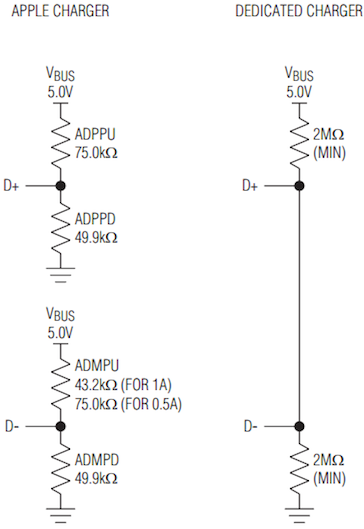
Schematic diagram of Apple chargers. Source DMAX14568EMAX/14568AE Datasheet.
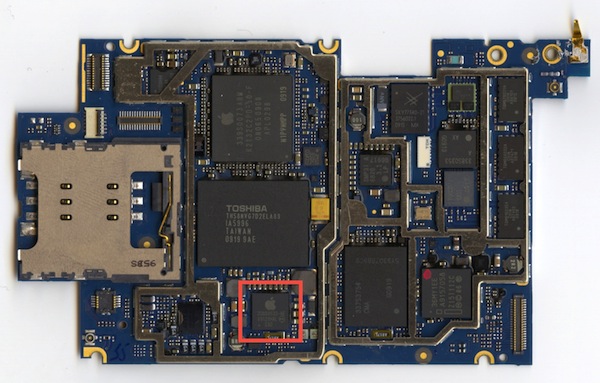
The function of the power controller in the iPhone 3GS is performed by the 338S0533-AE chip.Illustration taken from ifixit.com.
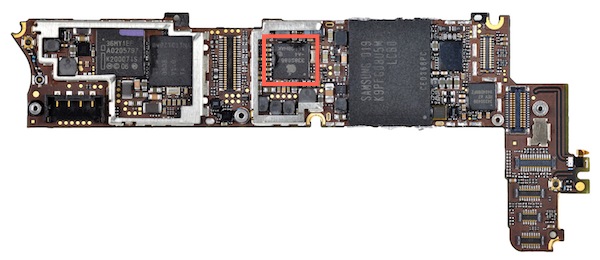
The iPhone 4 uses the 338S867-A4 chip for these purposes.Illustration taken from ifixit.com.
As you understand, the overwhelming majority of non-original chargers do not meet the requirements according to which Apple develops its power supplies. Therefore, when using them, some unpleasant incidents can often occur. For example, if there is a power surge in the network, the power controller may fail. For example, in this regard, elements such as the 338S867-A4 chip (which serves as the power controller in the iPhone 4) and 338S0533-AE (the power controller in the iPhone 3GS) are very sensitive to voltage changes in the network. Therefore, when choosing a power supply, buy only original products, or devices from other manufacturers certified by Apple.
Damage caused by moisture
This type of damage is perhaps the most terrible of all three. The fact is that water first of all damages the power elements on the board. This applies to parts of the power supply circuit of the iPhone, iPad, elements of the display backlight circuit, and various parts of the radio path. They really don't like moisture and LCD matrices. After water gets on them, spots appear on the substrate, which scatters the backlight light under the display, which then do not disappear in most cases.
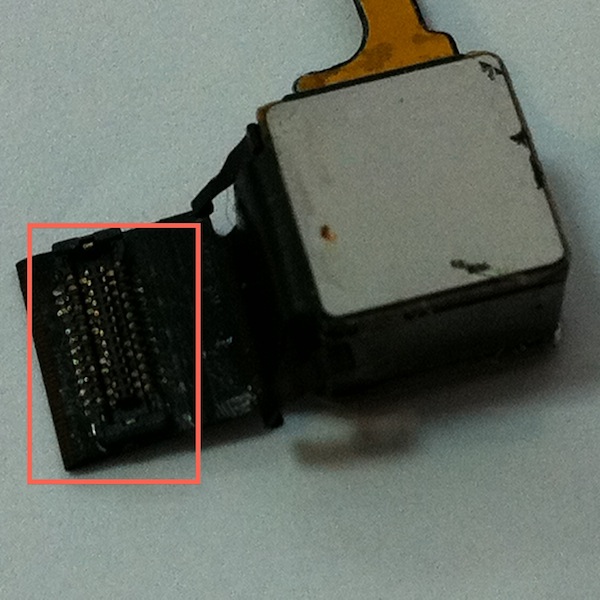
Rotten camera connector in iPhone 4. Moisture got inside the phone twelve hours before the visit to the service center.
In order for irreversible destruction of the phone’s internals to begin, three hours from the moment moisture enters is enough. If you don’t take special measures, then after this time your chances of restoring your phone are reduced by exactly half. And then everything will depend on your luck and the professionalism of the employees of the service center where you turn for help.
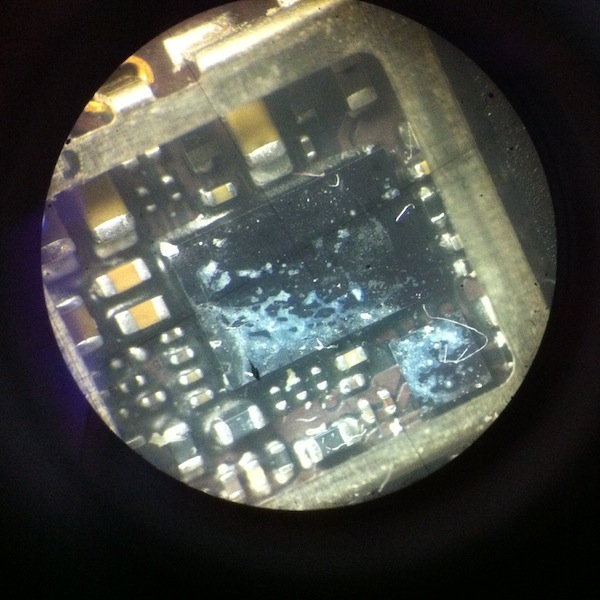
Rust on the board elements under the protective shield, which was formed due to condensation.
